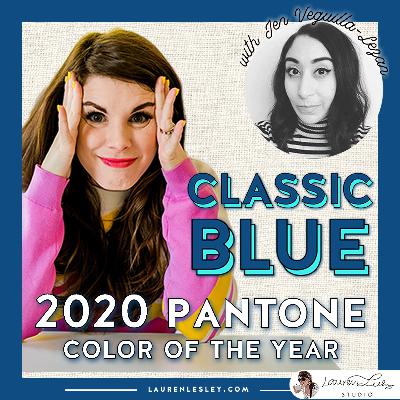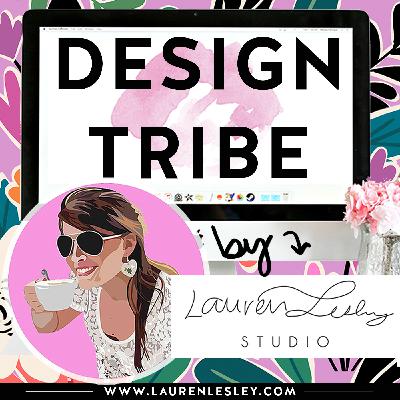The Visibility Strategy w/ Kim Kuhteubl
Description
Buy her book: https://www.mebydesign.com/shop-2/branding-interior-design-visibility-and-business-strategy-for-interior-designers
QUESTIONS:
1.) What are some of the biggest problems you see designers facing?
2.) What is the best piece of advice you can provide designers when it comes to networking and getting their designs in front of the right people?
3.) How much does mindset play a role in designers feeling ‘stuck’?
4.) Do you believe that designers are lacking the right marketing or PR strategies? Is there something deeper going on or is it a little of both?
5.) How would you advise designers to become more ‘available’ for the life they truly want? What are some action steps they can take to become more available?
6.) How does gender play a role?
7.) So, explain to us your Visibility Strategy. What are some step-by-step things designers can do to be more visible online and in the real world?
8.) A lot of artists and designers are introverted, myself included. We’re not necessarily shy, but we don’t enjoy being ‘on’ and being in front of people all of the time. Do you have any tips for introverts? Would it be better for them to hire a PR manager or to outsource some of the extroverted tasks involved in becoming more visible?
9.) Do you have any suggestions for ways designers can earn more money in 2020?
10.) What are some of the biggest emotional hurdles designers face surrounding money and what are your tips to help them overcome these hurdles?
TRANSCRIPT
Speaker 1 (00:04 ):
What's up design tribe, but welcome back for a another episode. Now if you want to tune in to the live streams, then be sure to join in my design tribe Facebook group will where I go live with guests and do new episodes of the design tribe. To watch past episodes. Be sure to check out my playlist on YouTube for the video version and of course check out the design tribe on iTunes and Spotify for the podcast of version if you are wanting to listen while doing something else or getting crap done. All right, let's jump in.
Speaker 1 (00:40 ):
Hello. Hi everyone and welcome to today's episode with Kim Kuhteubl where we're going to discuss the her visibility strategy and also go through all kinds of questions. So Kim is an author who works with designers on better business strategies and some kind of like emotional blocks that designers sometimes have. So Kim, if you want to introduce yourself and kind of give a little bit of your backstory to everyone in the design tribe, I'm sure. Thank you so much first of all morning for having me on the show. I really appreciate it. I work with interior designers on their branding and visibility. As you said. I actually am a producer by trade and I spent a lot of time in television and contributing articles to different publications and then when I was sort of looking to transition out, I started working with a success coach and put together a package of services for interior designers and then realized, Oh wait a second, they like what I'm offering here.
Speaker 1 (01:39 ):
And it was initially video and it was blog production and blog content sort of things that I had done inside of my job as a producer is a content creator. But then I started to put together trends that were happening in terms of visibility and leadership and things that were getting in the way of designers actually getting the press or putting out the book in the world or getting the next level of client. And what it's, what I started to understand was that I was learning about women in leadership because 80% of interior designers are women. And so as I was working with them, I was learning about how women lead and also what gets in the way of them leading at their full capacity when they're creative. Right. So then what are some of the biggest problems you see designers facing? Like you said, 80% of interior designers are women I've kind of noticed as well.
Speaker 1 (02:39 ):
It's the same as true in textile design, which is my background. So yeah, I worked as a graphic designer for a little while and then I was a textile designer for seven years and I love, love, love textile design. But I did, I have noticed some kind of different design industries that women gravitate towards as opposed to men. Like a lot of industrial designers have more men tend to be more men. Yeah, it's interesting. I think that from the perspective of blocks you could, we can look at it a couple of ways. There are the business blocks and then there are the emotional blocks as a creative because fundamentally what you are as a creative, that's my dog, Ramona.
Speaker 1 (03:25 ):
We are as a creative is we're selling our creative work. And I don't know about you, but for me, when I'm being creative, I learned through my creativity. I'm a writer. I learned through my writing, I learned through the things that I create. And so when you have to offer those for sale, a lot of times there are going to be personal blocks that are involved there. So you might think, can I charge that much for my work? Is it worth it? Is it good enough? Or this work is not good enough? Because a lot of designers and creatives in general are perfectionistic. We're trying to get to our next level in terms of our creativity. So I like to look at things as done better than perfect. Otherwise nothing would get out in the world that that took a little bit of time to get there because at first I was just trying to be a perfect creative, you know?
Speaker 1 (04:19 ):
And I was like, no, well not show you that it's ugly. Or you judge it harshly. You say, that's really terrible. And meanwhile somebody else who's on the receiving end of that is finding beauty in that is finding wonder in that end. You've done your job. I think we all come here with gifts. I look at it spiritually too, that my creativity is a spiritual expression. And so there is somebody who needs to connect with that creativity and who's going to be moved by it. First it was just for me, but then eventually I'm here to serve with it. And so when you're here to serve with it, you have to get out of your own way with all of the, like the inner brouhaha that you might be telling yourself, whether you're, you have an inner mean girl or an inner insecure girl, designers.
Speaker 1 (05:04 ):
You mentioned to me that you were an introvert. And I'm an introvert as well. Most creatives are introverted. They love spending time alone. And what you have to do is choose the time that you're going to be in communication with as resists and how you're going to be in communication with others. And that's more important in that moment because you're here to be of service. Right? So I think what I'm hearing you say is that, you know, a lot of designers have these emotional blocks with, you know, kind of on one hand and I worked this price that I, that I need to charge really in order to make a decent living and support myself and also, Mmm, okay. Trying, dealing with perfectionism, you know, being afraid to really put yourself out there as, I guess what that boils down to is another block and then, Mmm.
Speaker 1 (05:56 ):
Also like when you're thinking about some of the blocks on them as an aside, at least like when it comes to something like pricing, how would an artist maybe know the market just isn't receiving what they're putting out there? Because I see that happen a lot too, where it's like, you know, you might love what you're, you know, you might love your work, you might believe in it and you're putting it out there. But if you're not seeing results, like when is a good time for an artist and maybe say, okay, like this isn't really viable for the market because you really have to have both, right? Like you have to have the emotional strength to really like put yourself out there like what you're talking about. But also there has to be a market for the product that you're putting out there and there.
Speaker 1 (06:37 ):
I don't know, there has to be someone who's willing to buy it. I I do. I love this question and I've never been asked it before in this way cause it's sparking a whole lot of things for me. Normally how I would answer it is that there's always a market for what it is you're doing. There's always a somebody who wants what it is you put out in the world. You just have to find them. And what happens is we get in our own way by thinking, Oh nobody wants to buy this. Then we start to focus on all of the reasons why nobody wants this or maybe it's not the right timing or all of those things. And so we focus on that instead of well where are the clients who want to buy this? And they might not be in your normal sphere of things, especially when it comes to design services.
Speaker 1 (07:23 ):
And this is a very common common, the problem with designers is that they have an idea in their head or they want to express their creativity in a certain way and the client wants the creativity expressed in another way and those things don't match. So they think, well I can do what they want but I'm not going to be creatively fulfilled so I can either be creatively fulfilled or I can be paid. But it can'








